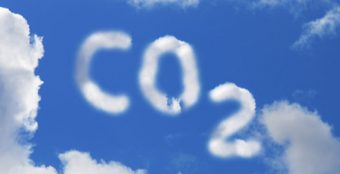
Carbon emissions from human activities have driven significant changes to the climate in Australia, including about 1C of warming and an increase in extreme hot days and fire weather, according to the latest State of the Climate report released by the CSIRO and Bureau of Meteorology.
This year the report includes new information on the cause of extreme weather, pointing the finger clearly at carbon emissions from human activities, as well as the latest findings on warming in the oceans.
The report said record hot average daytime temperatures in 2014 were mostly caused by the extra carbon dioxide in the atmosphere. Researchers found that without the greenhouse gases, the daytime temperatures would have been warm but not record-breaking.
Similarly, another study discussed in the report found that record-breaking temperatures in September 2013 were 85% a result of carbon emissions, and 15% due to natural variations in temperature.
Karl Braganza, from the Bureau of Meteorology, said the science attributing extreme weather events to climate change has matured in the past few years.
“Two years ago, these studies were emerging in the literature. But now we’ve had a good five solid years of these studies in the international literature,” Braganza said.
The report also contained new data on warming affecting the deep ocean, with warming now detected 2km below the surface.
“We now know that the upper two kilometres of the oceans have stored more than 80% of the extra heat that has accumulated since 1970,” said Steven Rintoul, director of the new CSIRO climate science centre.
“And if we include all of the ocean, that increases to 93%. In that sense, global warming is really ocean warming.”
Most of the other findings continued to show the same concerning trends seenyear after year.
The report found that Australia’s surface air temperature and surrounding oceans have warmed about 1C since 1910. Monthly maximum temperatures that occurred just 2.2% of the time between 1951-1980 increased in frequency more than five-fold, occurring 11.45% of the time between 2001 and 2015.
“The main point really is to summarise the state of the science, in particular with regard to observations of changes in the climate science, with a particular focus on Australia,” Rintoul said.
“It further strengthens the evidence that climate change is happening now and having an impact on Australia.”
Braganza said because of the climate changes that are already happening, the Bureau of Meteorology is focusing on helping to inform the country about how to adapt to those changes.
“Climate change is obviously happening now,” he said. “We know there is a tangible impact now, and we know the climate system is going to warm as a response to greenhouse gases already in the atmosphere over the next few decades.
“So in some ways there is more of a focus on informing adaptation to what we know is happening, as well as mitigation. For the bureau, that’s sort of where we’re sitting in our operations: informing near-future adaptation.”
Source: theguardian.com



